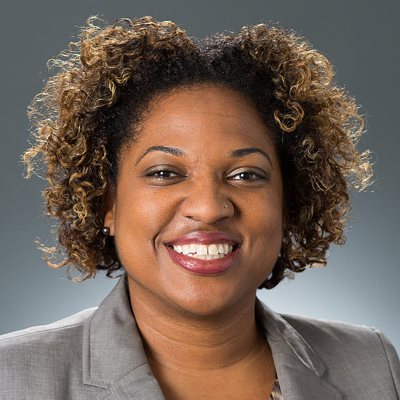Amoretta Morris: Five Questions with Casey

Amoretta Morris is a senior associate for Family-Centered Community Change, a new Foundation effort partnering with three communities to improve academic and economic well-being for children by working with parents and their children simultaneously.
Before joining Casey, Morris served as director of student attendance for the District of Columbia Public Schools, helping to cut the district truancy rate by 40 percent. She has also served as a youth and education policy adviser for District Mayors Anthony Williams and Adrian Fenty and was the founding director of the Justice 4 DC Youth! Coalition, which helped young people and adults promote juvenile justice reform.
Morris has a Bachelor’s degree in economics and African studies from Washington University in St. Louis and a Master’s degree in Public Policy from Harvard University’s John F. Kennedy School of Government.
Q1. What is family-centered community change, and how is it different from other community change efforts?
It means supporting families in low-income communities holistically by helping children get the resources they need to thrive while also helping their parents achieve economic stability and success. Serving children and their parents at the same time is essential to helping both succeed and produces stronger results than serving them separately. This is not a new idea, but part of the newness is bringing together multiple organizations and partners in specific high-poverty neighborhoods to adopt this two-generation approach. Another key difference is that instead of being the lead funder and initiator, we are coming into these communities as a co-investor and authentic partner in an existing, locally-led community change effort.
Q2. How did you choose the three target communities: the Buffalo Promise Neighborhood; the Weinland Park Collaborative in Columbus, Ohio; and San Antonio’s Eastside Promise Neighborhood and Choice Neighborhood initiative?
It was important to choose sites that already had key building blocks, like a strong backbone organization; multi-sector collaboration among institutions and organizations; a commitment to resident engagement and leadership; and a focus on data to drive results. We also looked for strong coalitions around early learning and a commitment to affordable housing. Without stable housing, families move around so much that it’s difficult to sustain and measure change. The three sites also represent a mix of federal and nonfederal initiatives and varied size, population and demographics.
Q3. What do we bring to the table as a co-investor?
Building on lessons learned in our Making Connections initiative and in our Civic Sites of Baltimore and Atlanta, we bring some early success in implementing an integrated, two-generation approach in a specific community. It’s one thing to have good services in place, but we want to build the capacity and infrastructure so that those pieces can be aligned in the ways most helpful and supportive of the family. For example, if the school, early learning center and adult training program aren’t communicating, there isn’t the flexibility to think through all of the options and pathways for specific kids and parents. We have also made expertise available from across the foundation and with national partners in areas like family economic success, resident engagement and integrated data systems. And we create opportunities for networking and connection with other community innovators in the field.
Q4. How do we know when a community has changed successfully?
Of course there are the larger, concrete indicators about poverty, employment and third grade reading proficiency, but some of the harder parts are the qualitative measures, such as how residents interact. Do people feel a sense of belonging? Are youth seeking belonging and connection in positive ways, for example through sports or clubs or community involvement, rather than through gangs? Do adults feel like they are connected and contributing to a community where they see themselves and their neighbors thriving? Sometimes the challenges are so huge and overwhelming that people feel paralyzed. We are building evidence in these communities that there are things you can do in your neighborhood and that change is achievable.
Q5. Tell us about a book on your professional shelf that has really influenced you.
When I was working in the Washington, D.C. Mayor’s office and we were looking at ways to measure progress in human terms rather than just looking at things like the number of potholes that get fixed, someone gave me Mark Friedman’s results-accountability bible, Trying Hard is Not Good Enough. This notion of determining the strategies you need to turn the curve on issues fundamentally changed the way I thought about data and performance. That book is still on my shelf, and I’ve flipped through it so much that it’s worn and dog-eared.






